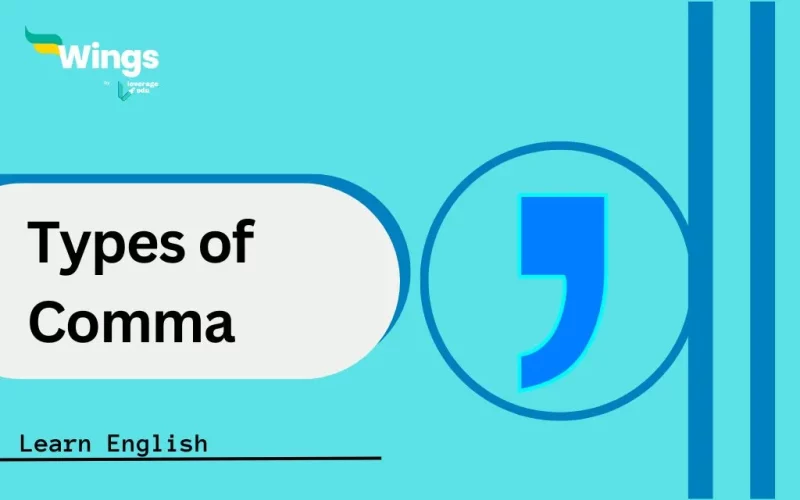Each grammar nazi has a different label for commas, however, each one of them will agree on the guidelines for using them. We all know that commas are necessary to assist in organising and making complex sentences easier to grasp, but novice writers may find it challenging to follow certain comma guidelines. Continue reading this blog to learn all about the types of comma and how they can be part of English grammar.
This Blog Includes:
What is a Comma?
A comma is a punctuation mark (,) used in writing to indicate a pause or separation within a sentence. It has several functions, such as separating items in a list, joining independent clauses in a compound sentence, setting off introductory elements, and clarifying the meaning of a sentence. Essentially, it helps to organise and structure written language, making it clearer and easier to understand.
Also Read: What is the Use of Commas (,)
5+ Types of Comma Used in English Grammar
Take a look at the types of commas that can be used in the formation of sentences along with their examples.
1. Listing Comma: Used to separate items in a list.
| Example: “She bought apples, oranges, and bananas.” |
2. Coordinating Comma: Used to join independent clauses in a compound sentence with a coordinating conjunction (and, but, or, nor, for, so, yet).
| Example: “She likes to swim, but he prefers to hike.” |
3. Introductory Comma: Used after introductory words, phrases, or clauses.
| Example: “However, I disagree with your opinion.” |
4. Conjunctive Adverb Comma: Used before and after conjunctive adverbs (however, therefore, moreover, consequently, etc.) when they join two independent clauses.
| Example: “He didn’t study; therefore, he failed the test.” |
5. Appositive Comma: Used to set off nonessential appositive phrases (noun phrases that rename or explain a nearby noun).
| Example: “My brother, a doctor, lives in New York.” |
6. Serial Comma (Oxford Comma): Used before the conjunction in a list of three or more items.
| Example: “I like to eat pizza, pasta, and salad.” |
7. Direct Address Comma: Used when directly addressing someone or something.
| Example: “Mary, please pass the salt.” |
Explore: 11+ Comma Examples and Usage: Rules and Exercise
Uses of Different Types of Comma in Sentences
Here are some more examples of commas which is used in sentences:
1. Separating Items in a List: Example: “I need to buy apples, bananas, and oranges.” 2. Joining Independent Clauses in a Compound Sentence: Example: “She likes to read, but he prefers to watch TV.” 3. Setting off Introductory Elements: Example: “After dinner, we went for a walk.” 4. Clarifying Meaning: Example: “Let’s eat, Grandma!” (Without the comma, it could be misinterpreted as “Let’s eat Grandma!”) 5. Separating Coordinate Adjectives: Example: “She wore a beautiful, elegant dress.” 6. Separating Elements in Dates, Addresses, and Numbers: Example: “She was born on June 12, 1990, in New York, NY.” 7. Direct Address: Example: “John, can you pass me the salt?” 8. In Quotations: Example: He said, “I’ll be there soon.” |
Related Reads on Punctuation
FAQs
Ans: The Oxford comma, also referred to as a serial comma, is inserted right before the conjunction in a series of three or more phrases, which is typically “and,” “or,” or “nor.”
Ans: When any of these seven coordinating conjunctions join two independent clauses, they should be separated with commas: and, but, for, or, nor, so, yet. For instance, my brother loves chocolate ice cream, but I like vanilla.
Ans: When the independent clause comes first, there is no comma. Additionally, a comma is never necessary inside an independent phrase.
We hope this blog has provided you with all the necessary information on types of comma. To advance your grammar knowledge and read more informative blogs, check out our Learn English page and don’t forget to follow Leverage Edu.
 One app for all your study abroad needs
One app for all your study abroad needs















 30,000+ students realised their study abroad dream with us. Take the first step today.
30,000+ students realised their study abroad dream with us. Take the first step today.
